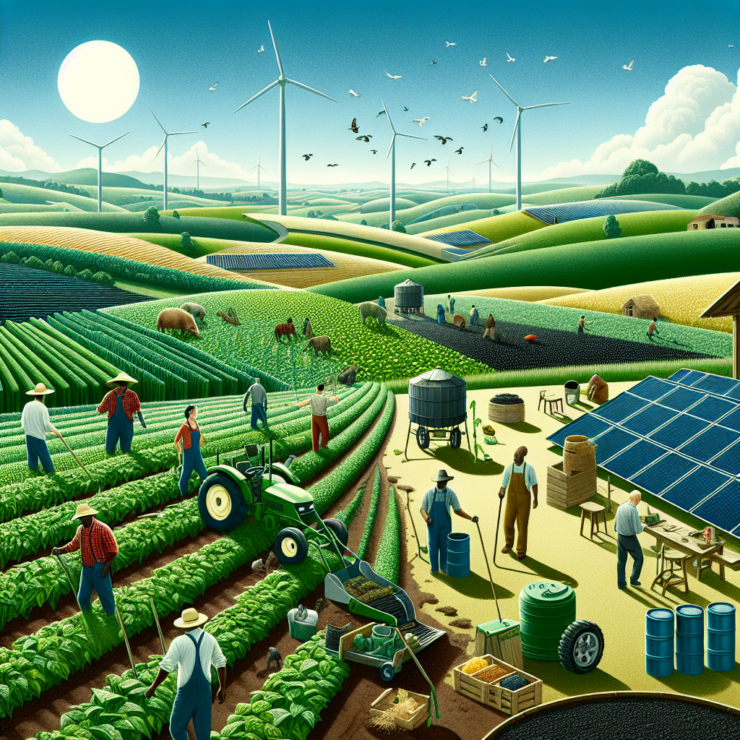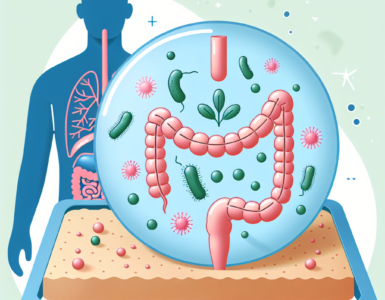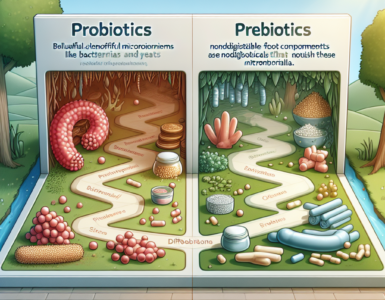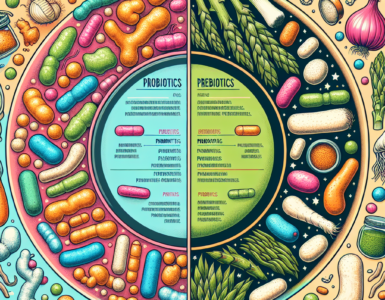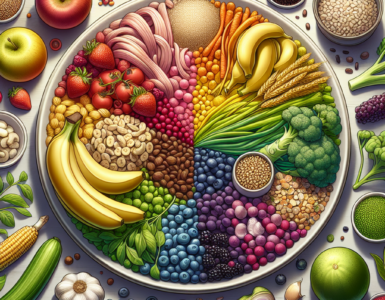Introduction to Sustainable Farming
In the journey towards a healthier planet, agriculture plays a pivotal role. Sustainable farming emerges as a guiding light for this journey, promising a balance between our need for food production and the preservation of our environmental resources.
Defining Sustainable Farming
Sustainable farming is the practice of producing food, fiber, and other plant or animal products using farming techniques that protect the environment, public health, human communities, and animal welfare. This form of agriculture enables us to produce healthful food without compromising future generations’ ability to do the same.
The hallmark of sustainable farming is its minimal impact on the environment, as it operates on the principle of meeting current demands without depleting resources for future use. These practices are designed to maintain soil health, conserve water, reduce air and water pollution, and promote biodiversity.
Sustainable farming practices encompass a wide range of strategies, such as using renewable energy sources, recycling plant and animal wastes, and conserving water resources. It’s a holistic approach that takes into account the long-term viability of farming.
The Importance of Sustainable Practices in Agriculture
The significance of sustainable practices in agriculture can’t be overstated. With the global population expected to reach 9.7 billion by 2050, the demand for food will inevitably rise, placing increased pressure on our agricultural systems. Sustainable farming practices are crucial in ensuring that this demand is met without causing irreparable harm to our environment.
| Factor | Impact of Sustainable Farming |
|---|---|
| Soil Health | Preserves and enhances fertility |
| Water Quality | Reduces runoff and conserves water |
| Biodiversity | Promotes a variety of species and habitats |
| Greenhouse Gases | Lowers emissions compared to conventional farming |
By adopting and promoting sustainable farming, we can achieve multiple goals: producing enough nutritious food, minimizing environmental impact, supporting local economies, and maintaining the health of our planet. It’s an integrated approach that requires the participation of not just farmers, but also consumers, policymakers, and businesses to be successful.
In essence, sustainable farming practices are not just a method of food production but a comprehensive philosophy that seeks to harmonize with nature while providing for the needs of the present and future generations. It’s a commitment to nurturing the land that feeds us, ensuring that it remains fruitful and vibrant for years to come.
Core Principles of Sustainable Farming
Sustainable farming practices are essential for maintaining the health of our planet and ensuring that future generations can continue to cultivate and enjoy the land. Understanding the core principles of sustainable agriculture is the first step toward implementing an eco-friendly diet and lifestyle.
Soil Management
Soil is the foundation of agriculture, and sustainable soil management is critical for the long-term productivity of farms. Practices that enhance soil health include the use of organic fertilizers, such as compost and green manure, and the minimization of soil disturbance through no-till farming methods. These practices help to maintain soil structure, reduce erosion, and increase the soil’s capacity to retain water and nutrients.
| Sustainable Soil Management Practice | Benefit |
|---|---|
| Composting | Enriches soil, reduces waste |
| Crop Cover | Prevents erosion, improves moisture retention |
| Reduced Tillage | Preserves soil structure, reduces erosion |
Water Conservation
Water is a precious resource, and sustainable farming practices focus on optimizing water use and reducing waste. Techniques include the implementation of efficient irrigation systems, such as drip or subsurface irrigation, and the conservation of natural water sources through buffer strips and the restoration of wetlands.
Water conservation not only ensures that farms can continue to produce crops during times of water scarcity, but it also helps to protect local ecosystems.
| Water Conservation Technique | Benefit |
|---|---|
| Drip Irrigation | Reduces water usage, targets root zones |
| Rainwater Harvesting | Collects and stores rainwater, reduces reliance on external water sources |
| Mulching | Reduces evaporation, maintains soil moisture |
Biodiversity
Biodiversity is the variety of life in a particular habitat or ecosystem, and it is crucial for the resilience and sustainability of agricultural systems. Diverse crop rotations, the establishment of habitat for beneficial insects and wildlife, and the preservation of native plant species are all ways that farmers can enhance biodiversity on their farms. These practices contribute to natural pest control, improve pollination services, and strengthen the agricultural ecosystem against diseases and extreme weather events.
| Biodiversity Enhancement Practice | Benefit |
|---|---|
| Crop Rotation | Reduces pest populations, improves soil health |
| Beneficial Insect Habitats | Encourages natural pest control, promotes pollination |
| Native Plant Preservation | Supports local wildlife, maintains ecological balance |
Implementing these core principles of sustainable farming can lead to a more eco-friendly and resilient agricultural system. As consumers become more aware of their food’s origins and the practices used to grow it, they can make informed choices that support sustainable farming and contribute to a greener future.
Sustainable Farming Techniques
Sustainable farming practices are methods that aim to meet society’s food and textile needs without compromising the ability of future generations to meet their own needs. These practices are designed to protect the environment, expand the Earth’s natural resource base, and maintain and improve soil fertility. This section will explore three key techniques that embody the essence of sustainable agriculture: crop rotation and diversity, integrated pest management (IPM), and agroforestry and polycultures.
Crop Rotation and Diversity
Crop rotation is a cornerstone of sustainable farming, involving the practice of growing a series of dissimilar types of crops in the same area across a sequenced season. It helps in reducing soil erosion and increases soil fertility and crop yield.
| Benefits of Crop Rotation |
|---|
| Enhances soil structure and health |
| Reduces dependency on chemical fertilizers |
| Prevents soil-borne diseases |
| Breaks insect and weed cycles |
Crop diversity, also known as polyculture, involves planting multiple crops in close proximity. This leads to a more complex ecosystem that can protect against pests and diseases, while also promoting a healthy balance of nutrients in the soil.
Integrated Pest Management (IPM)
Integrated pest management is a holistic approach to sustainable farming that uses a combination of techniques designed to minimize the use of pesticides and reduce the risk of developing pest-resistant crops.
| IPM Strategies |
|---|
| Biological control (using natural predators and parasites) |
| Cultural practices (crop rotation, timing of planting) |
| Mechanical and physical controls (traps, barriers) |
| Chemical control (targeted pesticides as a last resort) |
IPM aims to create a synergistic approach that respects the natural balance of the ecosystem, reducing the negative impacts on the environment and human health.
Agroforestry and Polycultures
Agroforestry combines agricultural and forestry technologies to create more diverse, productive, profitable, healthy, and sustainable land-use systems. Trees or shrubs are integrated with crops and/or livestock in a way that benefits both the environment and the farm’s economy.
Polycultures, on the other hand, grow multiple crop species in one space at the same time. They mimic the diversity of natural ecosystems and can lead to more resilient agricultural systems.
| Agroforestry and Polyculture Benefits |
|---|
| Enhanced food and resource production |
| Increased biodiversity |
| Improved soil structure and fertility |
| More effective water management |
These techniques foster a harmonious relationship between the land and the agricultural practices employed, promoting long-term sustainability and productivity. By implementing these methods, farmers can contribute to a more sustainable future while also potentially reaping greater economic rewards.
Benefits of Sustainable Farming
Sustainable farming practices offer a multitude of benefits that span environmental, health, and economic aspects. These practices are designed to meet current agricultural needs without compromising the ability of future generations to meet their own, creating a more balanced and conscientious approach to food production.
Environmental Benefits
Sustainable farming practices contribute significantly to environmental conservation. They help protect and enhance soil health, reduce water use and pollution, and conserve biodiversity.
| Environmental Aspect | Benefit of Sustainable Farming |
|---|---|
| Soil Health | Reduced erosion rates and improved soil fertility |
| Water Use | Lower consumption and improved water management |
| Biodiversity | Preservation of various species and natural habitats |
By minimizing the use of chemical pesticides and fertilizers, sustainable farming reduces soil and water contamination. The emphasis on organic methods and natural resources leads to healthier ecosystems and a reduction in greenhouse gas emissions.
Health and Nutritional Benefits
The health and nutritional benefits of sustainable farming practices are often overlooked, but they play a crucial role. Food produced sustainably is generally free from harmful pesticides and fertilizers, leading to safer consumption and potentially reducing health risks associated with chemical exposure.
| Aspect | Benefit of Sustainable Farming |
|---|---|
| Pesticide Exposure | Decreased risk of chemical ingestion |
| Nutritional Content | Higher levels of certain nutrients in organically grown produce |
| Food Safety | Enhanced safety due to reduced contamination risks |
Additionally, sustainable farming supports the growth of a diverse range of crops, which contributes to a more nutritious and varied diet for consumers. This diversity also helps in preserving heirloom and local varieties of produce, which may have unique health benefits.
Economic Benefits for Farmers and Communities
Sustainable farming practices can also lead to economic benefits for farmers and their communities. By reducing the need for expensive chemical inputs, farmers can lower their production costs and potentially increase their profit margins. Moreover, sustainable practices can lead to more resilient farming systems that can better withstand extreme weather events and market fluctuations.
| Economic Aspect | Benefit of Sustainable Farming |
|---|---|
| Production Costs | Reduced expenditure on chemicals and fertilizers |
| Profit Margins | Potential for increased profits due to premium pricing of sustainable products |
| Resilience | Greater ability to adapt to environmental and economic challenges |
The economic stability provided by sustainable farming can also support rural communities, leading to job creation and the development of local markets. Such practices encourage a closer relationship between farmers and consumers, often resulting in fairer prices and a stronger local economy.
Challenges Facing Sustainable Farming
Sustainable farming practices face a multitude of challenges that can hinder their widespread adoption and success. These obstacles span economic concerns, policy and regulatory roadblocks, and the increasingly pressing issue of climate change.
Economic Obstacles
Economic barriers are among the most significant challenges that sustainable farmers encounter. The transition from conventional to sustainable practices often requires a substantial upfront investment in resources, education, and infrastructure. Additionally, sustainable methods can sometimes result in lower yields initially, which can be economically straining for farmers.
| Economic Barrier | Description |
|---|---|
| Initial Investment | High costs associated with transitioning to sustainable practices. |
| Market Access | Difficulty accessing markets that pay premium prices for sustainable products. |
| Competition | Struggle to compete with larger, conventional farms that benefit from economies of scale. |
| Subsidies | Lack of government financial support which is often directed towards conventional farming. |
Policy and Regulation Hurdles
Policies and regulations can either support or impede the growth of sustainable farming. Presently, many policies favor large-scale, industrial agriculture operations over smaller, sustainable ones. Reforming these policies to create a level playing field is crucial for the growth of sustainable farming.
| Policy Area | Issue |
|---|---|
| Subsidies | Current subsidies often favor non-sustainable agricultural practices. |
| Land Use | Zoning and land use regulations may limit the availability of land for sustainable farming. |
| Organic Certification | The cost and complexity of obtaining organic certification can be prohibitive for small-scale farmers. |
Climate Change Impacts
Climate change poses a serious threat to all forms of agriculture, but it can be particularly challenging for those practicing sustainable farming. With the increase in extreme weather events, it becomes harder to maintain crop diversity and soil health, which are central to sustainable agriculture.
| Climate Impact | Effect on Sustainable Farming |
|---|---|
| Extreme Weather | Leads to crop loss and soil degradation. |
| Water Scarcity | Reduces the availability of water for irrigation. |
| Pests and Diseases | Alters the patterns of pests and diseases, potentially leading to increased infestations. |
Farmers who practice sustainable agriculture often have to be more resilient and adaptive to address these challenges. They may need to implement innovative practices, adjust their crop choices, and invest in water-saving technologies to navigate the changing climate. Despite these challenges, the benefits of sustainable farming practices to the environment, health, and local economies underscore the importance of overcoming these barriers to create a more sustainable future for agriculture.
How Consumers Can Support Sustainable Farming
The journey toward a more sustainable future is not solely the responsibility of farmers and policymakers. Consumers play a crucial role in this transition. By making informed choices, individuals can foster a more sustainable agricultural system.
Choosing Locally Sourced Produce
One of the most direct methods consumers can support sustainable farming is by opting for locally sourced produce. Purchasing from local farmers not only reduces the carbon footprint associated with transportation but also bolsters the local economy.
By supporting local farms, consumers can help maintain green spaces in their communities, promote crop diversity, and ensure that the money spent goes directly to supporting sustainable practices.
Understanding Labels and Certifications
Navigating the world of eco-labels and certifications can be daunting. However, understanding what these labels represent is crucial for those wishing to support sustainable farming practices. Certifications like ‘organic’, ‘fair trade’, and ‘rainforest alliance’ can indicate adherence to certain sustainable practices.
| Certification | Focus |
|---|---|
| Organic | No synthetic pesticides or fertilizers |
| Fair Trade | Fair conditions and compensation for workers |
| Rainforest Alliance | Conservation of biodiversity and sustainable livelihoods |
It’s important for consumers to research and understand the standards behind these certifications to ensure their purchasing decisions align with their values.
Advocacy and Education
Beyond personal consumption choices, consumers can also advocate for sustainable farming practices. This can take the form of supporting policy changes, participating in community initiatives, or simply spreading awareness about the benefits of sustainable agriculture.
Education plays a pivotal role in this. By staying informed about the issues facing agriculture and the environment, consumers can make more impactful choices and encourage others to do the same.
| Activity | Potential Impact |
|---|---|
| Voting for sustainable agriculture policies | Influence on legislative support |
| Participating in local food programs | Direct support of sustainable practices |
| Sharing information about sustainability | Broader awareness and education |
Through conscious purchasing decisions, a deeper understanding of food certifications, and active advocacy, consumers have the power to contribute significantly to the advancement of sustainable farming practices.
The Future of Sustainable Farming
The trajectory of sustainable farming is shaped by continuous innovation and the integration of technology. Its future is pivotal not just for the health of our ecosystems but for the very sustenance of our species. This section explores the advancements, the role of technology, and the collective effort required to foster a sustainable agricultural future.
Innovations in Sustainable Agriculture
Innovations in sustainable agriculture are driving the industry towards more eco-friendly practices that can feed the global population without depleting resources. These advancements include developing new crop varieties that are more resistant to pests, diseases, and climate change, thus reducing the need for chemical inputs. Soil health is being enhanced through organic amendments and cover cropping, which also contribute to carbon sequestration.
Biotechnology plays a role in creating genetically modified organisms (GMOs) that can withstand harsh conditions while minimizing environmental impact. Precision agriculture is another breakthrough, using data and analytics to optimize farming practices and resource management.
| Innovation | Description | Potential Impact |
|---|---|---|
| Drought-resistant crops | Genetically modified to require less water | Reduces water usage |
| Organic amendments | Natural fertilizers to improve soil health | Enhances soil fertility and carbon capture |
| Precision agriculture | Data-driven farming techniques | Optimizes resource use and increases yields |
The Role of Technology in Sustainable Farming
Technology is a cornerstone in the advancement of sustainable farming practices. Through the use of sensors, drones, and smart irrigation systems, farmers can now monitor crop health, soil moisture levels, and water usage with unprecedented precision. This leads to more informed decisions that promote efficient use of resources.
Automation and robotics are also revolutionizing sustainable farming by reducing labor costs and increasing efficiency. Technologies like vertical farming and hydroponics are enabling food production in urban environments, minimizing transportation emissions and promoting local consumption.
| Technology | Application | Benefits |
|---|---|---|
| Sensors and drones | Crop and soil monitoring | Reduces resource waste and enhances yields |
| Smart irrigation systems | Efficient water usage | Conserves water and energy |
| Robotics | Harvesting and weeding | Lowers labor costs and environmental impact |
Building a Global Movement for Sustainable Agriculture
A global movement for sustainable agriculture is essential to address the pressing challenges of our time, including food security, climate change, and biodiversity loss. This movement is built on the collective actions of individuals, communities, farmers, policymakers, and businesses.
Consumer choices play a significant role in supporting sustainable farming. By choosing locally sourced and certified sustainable products, consumers can drive demand for eco-friendly practices. Education and advocacy are also crucial in spreading awareness of sustainable farming practices and influencing policy at all levels of government.
The table below highlights key actions that can support the growth of sustainable agriculture globally:
| Stakeholder | Action | Impact |
|---|---|---|
| Consumers | Choosing sustainable products | Drives demand for sustainable practices |
| Farmers | Adopting eco-friendly techniques | Reduces environmental impact and improves resilience |
| Policymakers | Implementing supportive regulations | Creates an enabling environment for sustainable farming |
The future of sustainable farming hinges on the successful integration of these innovations, the widespread adoption of technology, and the strength of the global movement advocating for sustainable agriculture. It is a collaborative effort that requires the participation of everyone involved in the food system, from producers to consumers. With continued commitment and innovation, sustainable farming practices hold the promise of a healthier planet and a secured food future for generations to come.


